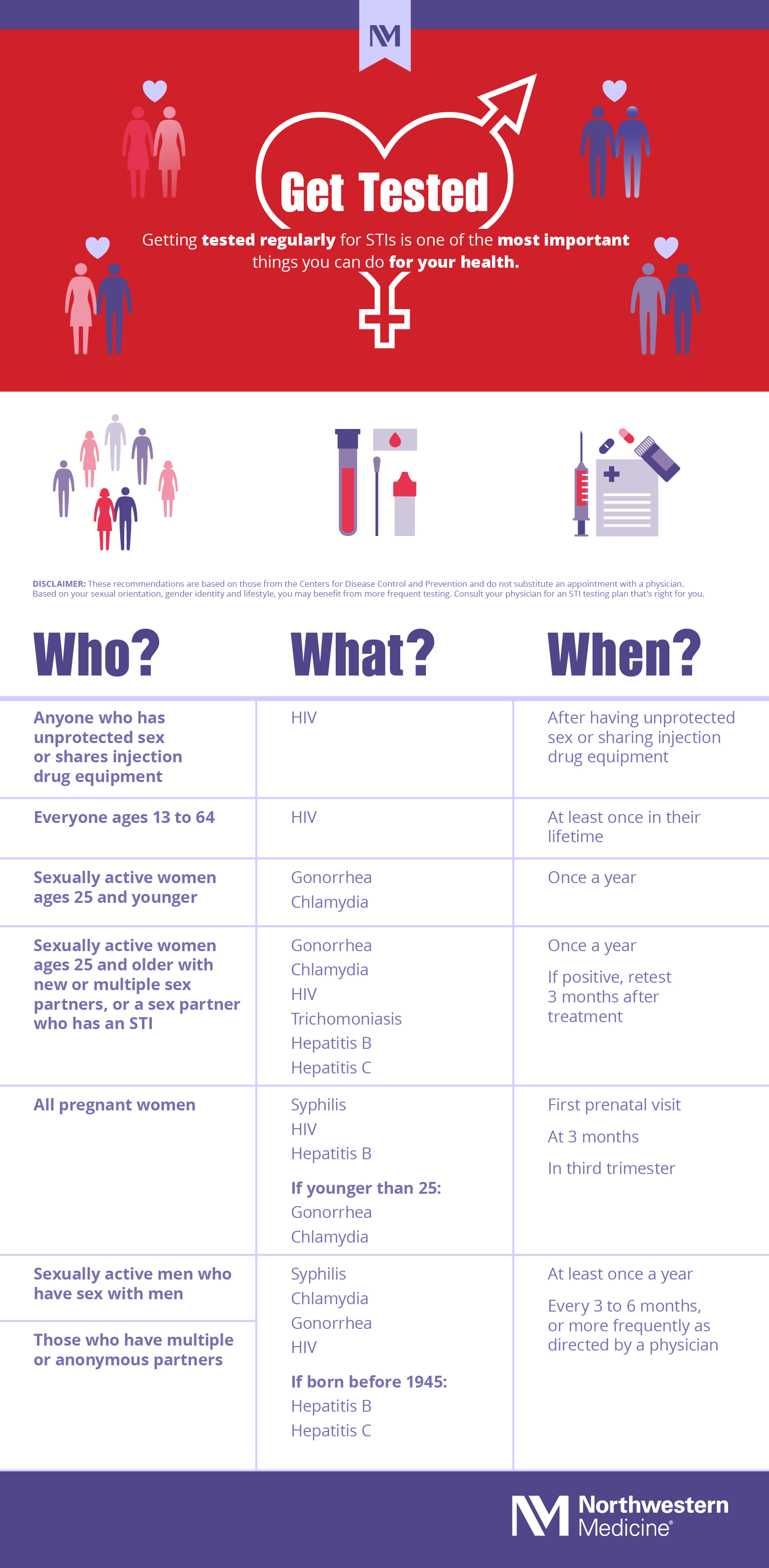STI Testing: Who, What and When? (Infographic)
Published August 2019
A Quick Guide
There’s a stigma attached to sexually transmitted diseases (STDs), but they’re exceedingly common. According to the Centers for Disease Control and Prevention (CDC), millions of people have them in the United States, some unknowingly.
To be considered a “disease,” something must cause symptoms. “Often these infections don’t cause symptoms,” says Northwestern Medicine Urologist Nelson E. Bennett Jr., MD. “That’s why, though commonly referred to as STDs, we refer to these as sexually transmitted infections, or STIs, in the medical community.”
Who can get an STI?
Anyone who is sexually active can get an STI — even if you have protected sex.
“Having protected sex with a male condom can help reduce the chance of STI transmission, but it doesn’t protect from certain STIs like HPV or the herpes virus, which can live on genital skin,” says Dr. Bennett. “Condoms will prevent infections on the skin of the penis or in the semen, and should be utilized for this purpose.”
Learn more about STI prevention here.
Are STIs Curable?
Many STIs are curable, and all are treatable. That’s why it’s imperative to get tested. Testing can range from a cervical swab during a routine gynecological exam, to a urine or blood test. Talk to your primary care physician or find a confidential testing center near you.
 Download STI Testing: Who, What and When? (Infographic)
Download STI Testing: Who, What and When? (Infographic)







